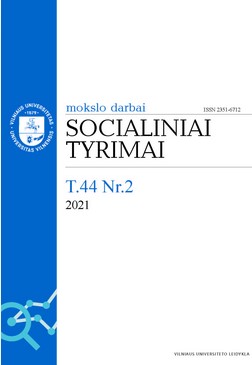Darboholizmas ir priklausomybė nuo darbo: motyvacinių veiksnių skirtumai
Workaholism and Work Addiction: The Differences in Motivational factors
Author(s): Modesta Morkevičiūtė, Auksė EndriulaitienėSubject(s): Labor relations, Individual Psychology, Organizational Psychology, Behaviorism, Human Resources in Economy
Published by: Vilniaus Universiteto Leidykla
Keywords: workaholism; work addiction; work motivation;
Summary/Abstract: Over the past decades, workaholism has received increasing attention from researchers. Despite a growing interest, no single definition or conceptualization of workaholism has emerged. The meaning of workaholism is arguably ambiguous and many different researchers use different definitions of what it is to be a workaholic (Griffiths & Karanika-Murray, 2012). Literature lacks consensus on how workaholism should be conceptualized and measured; the existing theoretical models offer conflicting ideas regarding the composition of the workaholism construct (Clark et al., 2020). Originally, the word “workaholism” was a take on working too hard in an alcoholic-like manner and was intended to connate all the problems that addiction brought (Oates, 1968). Thus, the primary discussion developes around two forms of excessive work (workaholism and work addiction). Both of them have often been used interchangeably in literature. However, more recently, part of the scientific debate has pointed up the opportunities to explore the differences between the two. In fact, even though workaholism and work addiction overlap at some point, some components of their meaning might differ (Griffiths et al., 2018). It was proposed by some authors that work addiction was a psychological construct, whereas workaholism was a more generic term indicating everyday work-related behavior rather than pathology (Clark et al., 2020; Griffiths et al., 2018). It is possible to disentangle the differences between workaholism and work addiction by paying attention not only to their composition but also to the factors determining them. Keeping in mind the proposed differences of workaholism and work addiction, each of these phenomena should be more or less predicted by different motivational aspects. However, conclusions about different motivational origins of workaholism and work addiction are currently impossible, as the existing studies do not differentiate between the correlates of both of these phenomena. Thus, the aim of the present study was to examine the differences in motivational factors predicting workaholism and work addiction. A total of 964 Lithuanian employees participated in a study. The levels of workaholism were measured using a short version of the scale proposed by Schaufeli et al. (2009) (DUWAS-10). Work addiction was assessed with the help of Bergen work addiction scale (Andreassen et al., 2012). Work motivation was measured using work extrinsic and intrinsic motivation scale (Tremblay et al., 2009). Both hypotheses that were tested in a study were partially supported. When conducting a regression analysis it was found that intrinsic work motivation, as well as one regulatory type of extrinsic work motivation (introjected regulation), were the factors predicting workaholism. Three regulatory types of extrinsic work motivation (external, introjected, integrated regulations) were the factors predicting work addiction. Intrinsic work motivation was not a significant factor predicting work addiction. Our results correspond to the idea that the etiologic pathway to work addiction may differ from that leading to workaholism and provides some support for viewing these constructs as separate ones.
Journal: Socialiniai tyrimai
- Issue Year: 44/2021
- Issue No: 2
- Page Range: 98-109
- Page Count: 12
- Language: Lithuanian

